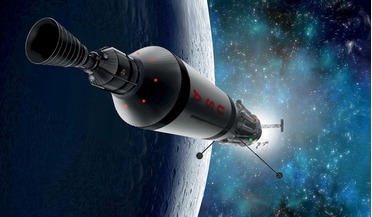 January 2018
Creating a viable cislunar economy
January 2018
Creating a viable cislunar economy
... and just 2.5 kW-hr/m2 in December. The Solar Power Satellite-Alpha concept. Solar energy is collected, converted to microwaves and beamed to Earth. One concept for a two giga-watt SSP satellite - called Solar Power Satellite (SPS) Alpha...
 March 2018
Mapping the dark universe
March 2018
Mapping the dark universe
... a ‘Deep Space mode’ (X- and Ka- bands), or a ‘Near-Earth mode’ (X- and K- bands). ESA’s deep space antennas have a beam waveguide structure. For the upgrade the mirrors M1 to M4 will not be modified. M5 will have the capability to rotate...
 April 2018
Developing Mars
April 2018
Developing Mars
... contributor on the optical design and the control system for the Kansas City team in NASA’s Power Beaming challenge. He is a founding member and director of ISEC, an organization furthering space elevator related research, including the recent...
 April 2018
Future Cubesat swarms pose significant communications challenges
April 2018
Future Cubesat swarms pose significant communications challenges
... the satellite cross- link option increases access time, one ends up with several technical challenges such as beam handover, Doppler shift, need for directional antennas, increased free-space loss and reduced data rate...
 November 2018
Monitoring illegal rainforest deforestation
November 2018
Monitoring illegal rainforest deforestation
...-mirror anastigmat telescope (TMA). It is an on-axis TMA reflexive system. An additional plane mirror redirects the beam to accommodate the mechanical envelope constraints. The result is a high-throughput telescope, chromatic free aberration system...
 January 2019
Saving humanity – is space up to the job?
January 2019
Saving humanity – is space up to the job?
.... Beyond space resource acquisition there is, of course, the possibility of space processing and manufacturing, and new systems to beam clean energy to Earth and create new cost-efficient launch systems such as mass driver launch systems...